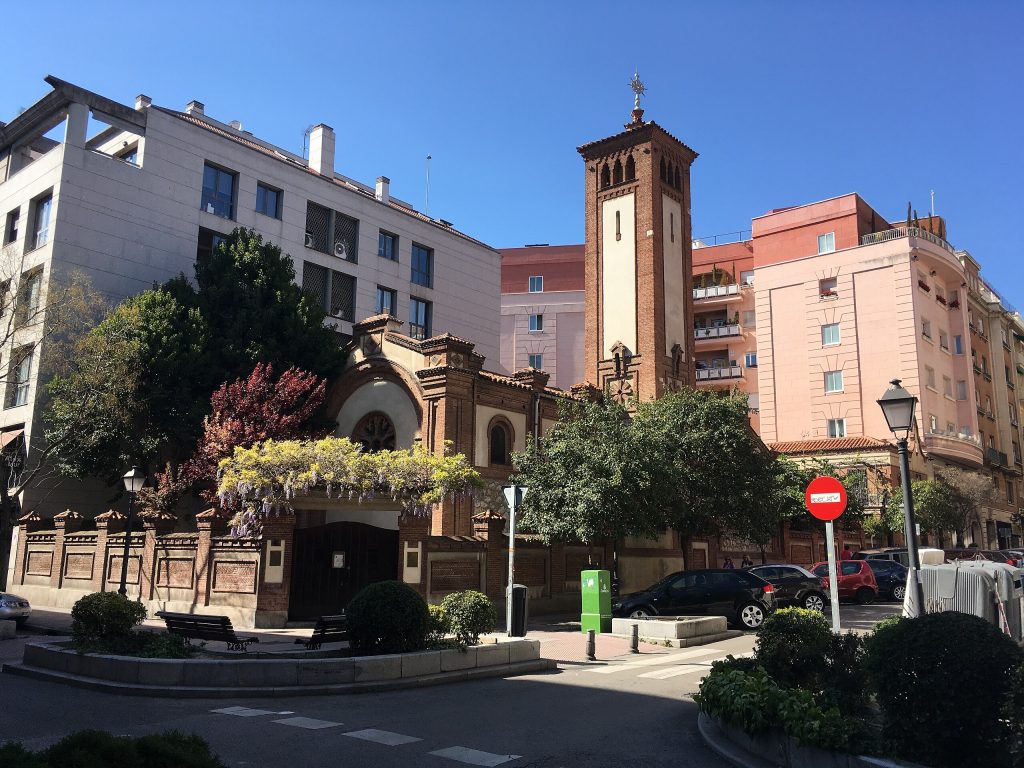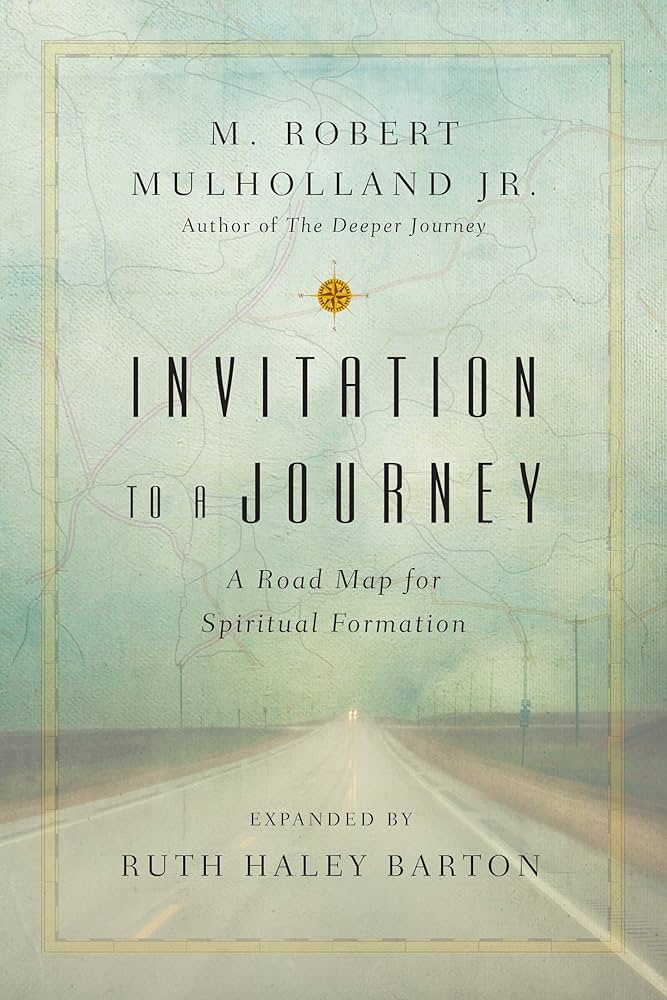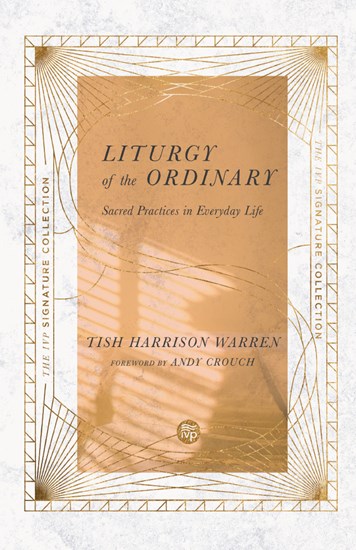A little English church in Madrid
When I lived in Madrid as a university exchange student, I attended St George’s Anglican Church in the beautiful barrio of Salamanca, not far from my dorm room. I probably should have found a Spanish-speaking church for maximum language immersion, but if I’d done that, I would never have met my friend Viv, so I’m backing my decision.
There were a few things I loved about this church, including the church building itself which was small but historic and pretty, with a lovely leafy patio where we adjourned for morning tea after each Sunday service.

But more than that, I soaked up all the liturgy I didn’t grow up with. Each week’s readings, while not King James Version, followed a global calendar and there was a practice of call and response in prayer. The minister’s robes changed with the seasons through Lent, Easter and Pentecost. For communion, we walked down the aisle and knelt at the front of the church where the minister laid a wafer in our open hands then tilted the communal cup of (real) wine onto our lips. And yes, once we were back in the pews, he would skull whatever remained of the wine.
Red, white and green martyrs
I don’t remember much of the sermons, but there was one that has stayed in my mind all these years. It was a sermon about red, white and green martyrs.
- Red martyrs are the people we traditionally think of as being martyrs – people who sacrifice their lives for the sake of Jesus Christ
- White martyrs are the people who sacrifice their lives in the sense of giving up worldly comfort for the sake of the gospel – such as Mother Teresa or the Desert Fathers
- Green martyrs didn’t have as clear a definition. This was the category for the rest of us seeking to live faithfully in our “normal” lives. (Interestingly, his discussion on green martyrs diverges from traditional colours of martyrdom, which focus on things like abstention and penitence.)

Red martyrs seem like an alien race to me. Every now and then I think to myself, could I, would I, be faithful under pain of death or torture? I’m not sure my faith is big enough, yet. Mostly I don’t think about this because it’s a bit terrifying. And also I live in Australia, which as a society is becoming quite hostile towards Christianity, but is by no means a dangerous place to be a Christian.
White martyrs drew my attention when I was in my early twenties, awakening to the idea that something had to be done about global poverty. Injustice wasn’t something I could just accept as a fact of the universe. While I didn’t really see it as martyrdom, the act of forgoing an income for a few years of my life to serve in Ecuador and Bolivia was an iteration of this – a kind of White Martyrdom Lite.
The challenge of green martyrdom
But now I have been back in Australia for eight years and am “settled” in the sense of earning and saving money, and being more anchored here with marriage and friends. This, it occurs to me, is where the challenge of green martyrdom lies.

In Western democracies, religion is tolerated rather than celebrated and the expectation is that your faith is personal and private, rather than public. Ever since I remember, it has seemed perfectly logical to me that church is something my family and I do, not something I rave about or invite friends to.
I said Australia is not a dangerous place to be a Christian but maybe that’s not strictly true. It’s dangerous in the sense that affluence and secularisation can get in the way. We run the risk of never thinking about our faith, taking it for granted. It’s hard to be faithful but we don’t even know it half the time because we’re confronted neither by violence nor by poverty.
And every time I slip into autopilot (this is the struggle of my life – any Enneagram Type 9s out there resonate?), every time I whinge about something trivial, every time I become conscious of how narrow my circle of prayer points is – it strikes me that in some ways it was easier to grow in my faith when I was “out there”. Prayer comes more easily to the fish on dry land than to the one in the water.
It’s in this context that I have been seeking to live out my faith more holistically. Two books that have enriched me greatly in this journey are Invitation to a Journey, by M. Robert Mulholland, and Liturgy of the Ordinary by Tish Warren Harrison.
Invitation to a Journey
I had read and loved Ruth Haley Barton’s Sacred Rhythms, as well as Introduction to Silence and Solitude, both of which are practical explorations of some classic spiritual disciplines. Barton provides the foreword and end-of-chapter discussions for this earlier book by Bob Mulholland, so I expected it to be similar to her own books.

It was different in a way that surprised and pleased me. Invitation to a Journey explores what spiritual formation actually is and provides the framework for spiritual disciplines. I got a lot out of reflecting on how different spiritual practices interface with each other and with different personality types. It’s this nuance and purpose that I found helpful. I also enjoyed looking at the stories of Jacob, Nicodemus and the seven churches in Revelation through a new lens.
While Barton’s books encouraged me in personal spiritual disciplines to develop my relationship with God, Mulholland’s book shows me how there are not only individual but communal disciplines. Going to Sunday service is just one communal discipline; half an hour of stillness every morning at home is just one individual discipline.
Each of them has a function. Each of them challenges our selfish, worldly default in some way. Depending on our personality type, we may gravitate towards some more than others, but we also need to be intentional about embracing the disciplines we find challenging. Spiritual disciplines are like a training regime for the green martyr.
Crucially, all spiritual disciplines are part of the formation of the individual, not so much for our own edification but primarily for the purpose of others.
Liturgy of the Ordinary
Warren Harrison’s book is an easy and joyful read, full of simple yet profound truths worth meditating on. It’s exactly the kind of book that I wish I might have written. It has also been exactly the right book for me at this stage of my journey.

One of the challenges of contemporary Christianity in secular Western societies like Australia is that being a Christian often feels like it’s just about going to church on Sunday. We feel proud of ourselves if we even attend a midweek Bible study, making that two, timebound touchpoints with the Bible.
Because our culture dictates that faith is private and personal, the end result is we segregate it from the rest of our lives. Liturgy of the Ordinary is an attempt to dissolve those walls and help us to see God and worship him in daily life, through activities as basic as making the bed, brushing our teeth, sending emails or sitting in traffic. The author beautifully renders the most ordinary, mundane things as sacred, too.
Finding rhythms of worship within the mundane tasks of everyday life is, I believe, at the heart of what it means to be a green martyr. And I’m confident that the more we can liturgise our lives, the more integrated our spiritual and material lives will become. Which is kind of the point of being a Christian, isn’t it?
What do you think of the concept of green martyrs? As usual, I would love to hear from you in the comments or via email or private message.

